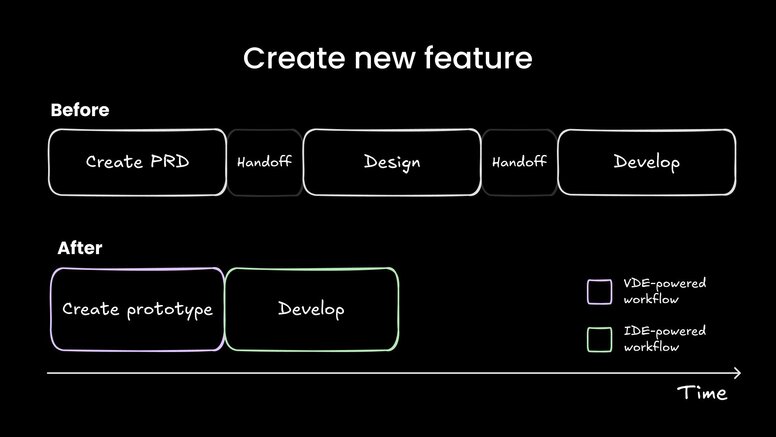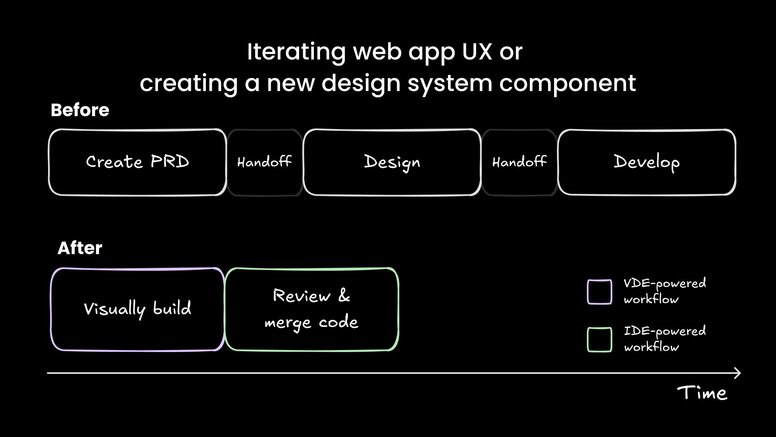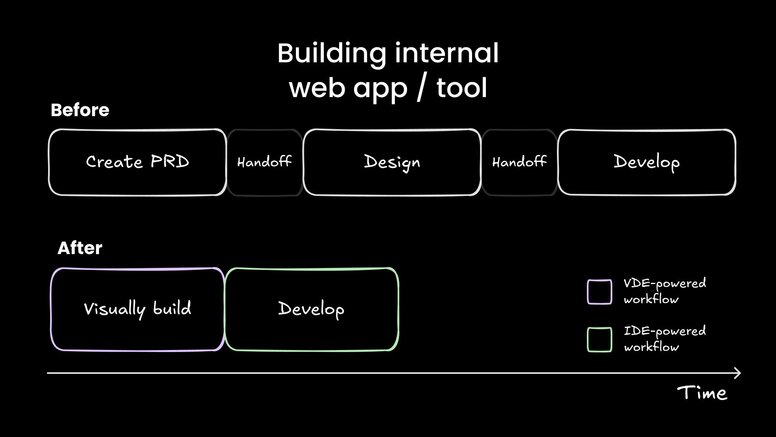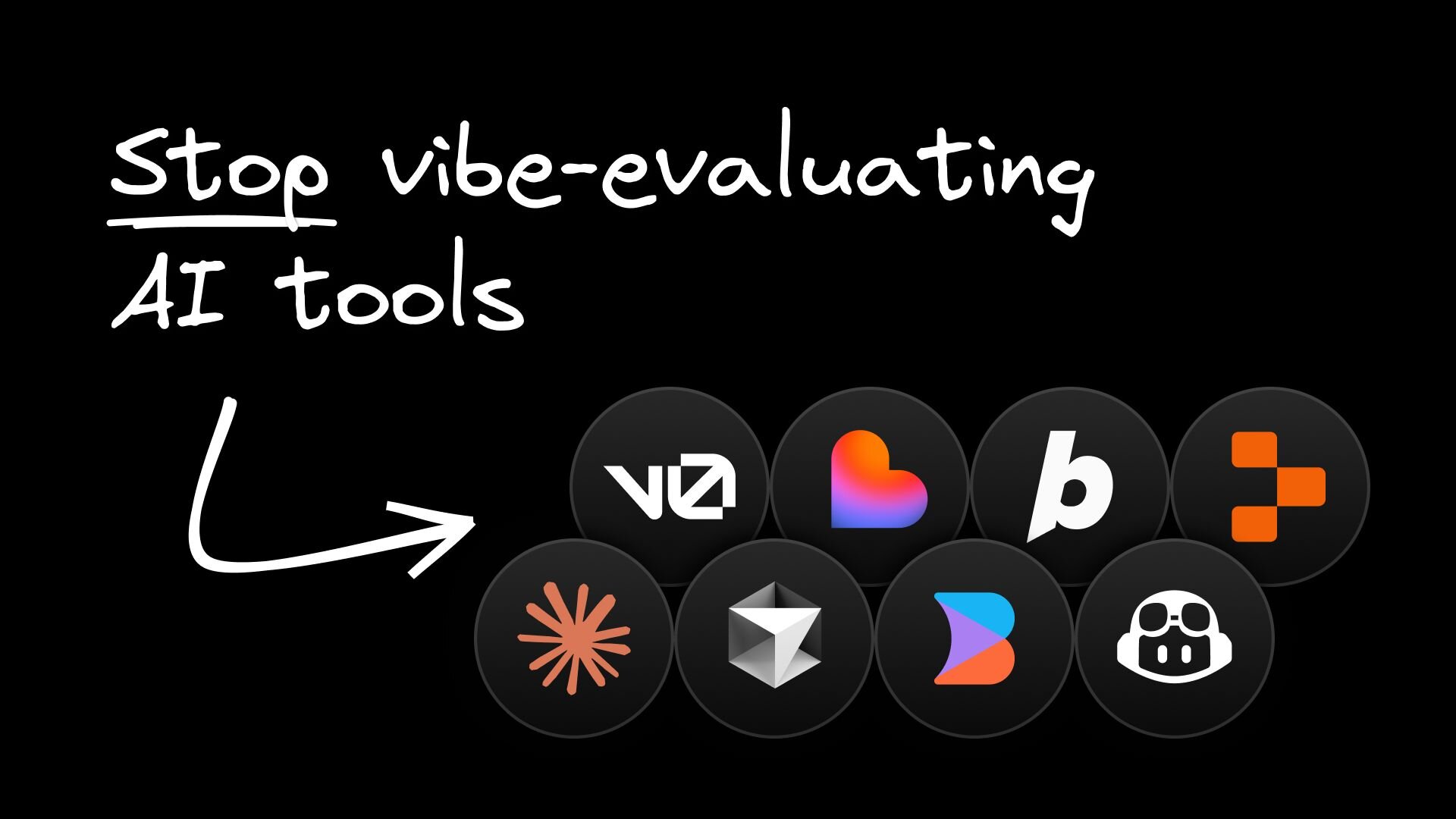AI
How to Evaluate AI Coding Tools for Your Enterprise
I've listened to 80+ sales and product conversions with product, design, and engineering leaders in enterprises evaluating AI coding solutions, interviewed dozens of developers using multiple AI coding solutions, interviewed engineering optimization leaders evaluating AI coding solutions, watched 100s of users build experiences with our AI coding solution, tried Bolt, Lovable, v0, Replit, Cursor, GitHub Copilot, Claude Code, Fusion, and personally shipped AI coded iterations to our own product.
I've concluded one thing:


The majority of teams today are vibe-evaluating AI coding solutions and there's a far better way to do it.
This guide is intended to give product, engineering, and design leaders in enterprise organizations a clear understanding of the three types of AI coding solutions, how AI coding fits into your enterprise, the criteria you should look for when shortlisting your AI coding solution, and how to POC a AI coding solution.
The three types of AI coding solutions
In my opinion, "AI coding" is the process of prompting AI to create code, visualizing the changes, and then iterating on those visualizations. This process continues until the outcome suits your liking.
There are three categories of AI coding solutions and almost every enterprise will use some combination of them:
Common AI coding use cases in enterprises
The overarching theme we hear when product, engineering, and design leaders come to us is that they're looking for ways to increase productivity and velocity "across the entire software development lifecycle". As part of their mandate, they're considering every step from the initial idea to the design through the delivery of that feature.
In many cases, they've identified a few common workflows that take longer and more resources than they probably should in a world where you can literally speak features into existence.
We've outlined three of the most common workflows in the graphic below:



What to look for in an enterprise AI coding solution
Quickly poke around social media and you'll see thousands of indie hackers and hobbyists leveraging AI coding solutions to quickly spin up prototypes and web apps. While these apps are often impressively powerful, they don't often meet many of the requirements enterprise have or accomplish the types of things they need.
Here's one example: I recently concluded interviews with eight users in different organizations who use or have tried multiple types of AI coding tools. In almost every case, they leveraged them for personal or hobby projects but almost none of them used them to accomplish tasks in their day jobs. They mentioned one of the major limiting factors was that the AI App Builders they tried didn't integrate with their organization's design system, code, and/or existing workflows.
To help you evaluate AI coding solutions for your enterprise, I borrowed a framework I used at Forrester Research when I conducted benchmarks to help you identify the right criteria to look for to ensure the AI coding solution you POC doesn't just work at the hobbyist level, it can scale for your entire organization to genuinely accelerate the entire software development lifecycle.
Evaluate AI coding solutions across four categories:
You can use the following scorecard to evaluate when shortlisting a AI coding solution for your enterprise:

Download the template
How to proof-of-concept (POC) a AI coding solution in your enterprise
We recommend a seven step approach to POCing a AI coding solution for your enterprise:
Looking for an enterprise-ready AI coding solution?
At Builder, we provide an AI Visual IDE called Fusion. It's built for enterprise workflows from the ground up. We've helped some of the largest organizations in the globe figure out how they can leverage AI coding in their workflows and we may be able to help you too. Reach out to get a personalized demo.


























